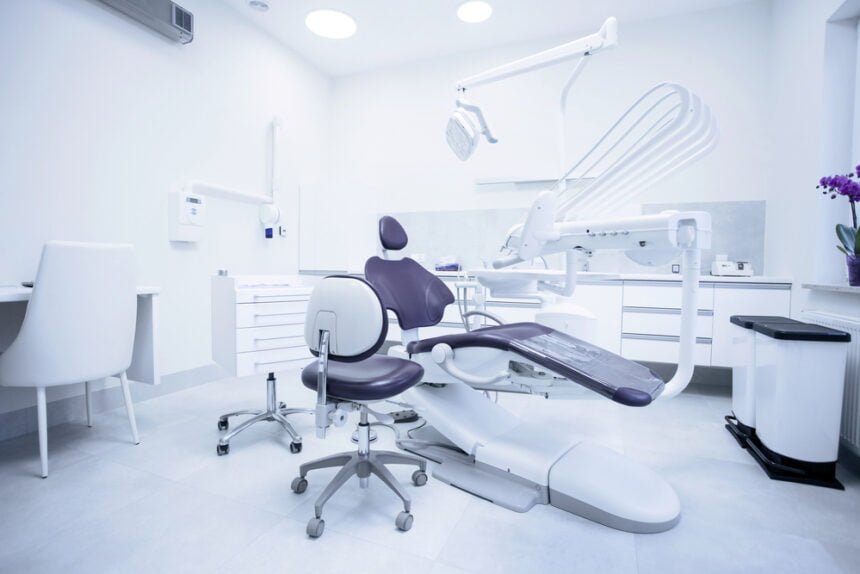Recent years have seen substantial development and change in the dentistry sector, mostly as a result of technology improvements and the changing demands of patients. So, the future of the industry and the practice of dentistry are being shaped by developing trends.
In our talks with dentist Dr. Junho Jung we uncovered that new therapeutic techniques and patient-centered approaches to healthcare are also part of this movement. This article will discuss recent developments in the dentistry sector and how they are influencing the care that dentists provide for their patients.
Digital Dentistry
Intraoral scanners, computer-aided design and manufacturing (CAD/CAM) systems, three-dimensional printing, and online consultations are all examples of the digital technology employed in the expanding area of digital dentistry.
The dentistry business as a whole has benefited greatly from the innovations brought about by these technologies, particularly in the areas of diagnostics, treatment planning, production, and patient communication.
Digital imprints of a patient’s teeth and gums may be made using intraoral scanners rather than the time-consuming and painful conventional methods.
Digital dentistry is a promising new field of study because of the ways in which it stands to advance dental treatment for patients while also enhancing productivity, precision, and lowering overall costs. As digital tools improve and become more widely available, they will undoubtedly have far-reaching effects on the dentistry sector.
Biocompatible Materials
Biocompatible materials are those that are safe for use in the human body and won’t hurt or cause unfavorable responses to live tissue. Restorations and prosthesis made from biocompatible materials are becoming more used in dentistry.
Zirconia for example, a kind of ceramic with exceptional resistance to wear and fracture, is one of the most widely utilized biocompatible materials in dentistry. Crowns and bridges made of zirconia are popular because of the material’s biocompatibility, longevity, and strength in the dentistry industry.
The increasing demand for biocompatible dental materials is indicative of a more widespread concern for patient well-being. New and improved biocompatible materials that provide even more advantages to patients are anticipated to emerge as dental technology advances.
Minimally Invasive Techniques
Patients want gentler, less intrusive procedures, thus dentists are increasingly turning to minimally invasive methods. The goal of these methods is to achieve successful treatment results while preserving as much of the patient’s natural tooth structure as feasible.
Air abrasion, which employs a high-pressure spray of microscopic particles to eliminate decay and other small regions of damage, is one of the most used minimally invasive treatments in dentistry. Instead of using typical drilling techniques, air abrasion may be employed, and in many cases, no anaesthetic is required.
Minimally invasive dentistry is a growing field because it allows for efficient treatment with less downtime and less risk of infection than traditional methods. More advanced, patient-friendly, less invasive dental procedures are anticipated to emerge as dental technology advances.
Patient-Centric Care
The term “patient-centric treatment” refers to an emerging dental practice model that places more value on the patient’s unique requirements and preferences. This method emphasizes getting to know each individual patient and their situation intimately so that care may be tailored to their exact need.
Technology used to enhance the patient’s experience is another key component of patient-centered care. Some examples of such digital technologies include patient portals and online consultations, which streamline the process of patients communicating with their dentists.
As a whole, patient-centered care is becoming more prevalent in the dental field. Dentists may give better treatment and make their patients happier by putting greater emphasis on their individual requirements and preferences.
Multidisciplinary Collaboration
The modern dental practice of multidisciplinary cooperation entails tight coordination with other medical specialists to improve patient outcomes. This method acknowledges the interconnectedness of oral and systemic health and the power of a multidisciplinary team to deliver superior treatment than that of a single specialist.
Working together as a team between dentists and orthodontists is another example of interdisciplinary teamwork in the dental field. Orthodontists are dental specialists that focus on correcting misaligned teeth and jaws for patients, and they often collaborate with general dentists to provide patients with the best possible care.
Dentists and other medical specialists (such as dietitians, physiotherapists, and psychologists) often work together in multidisciplinary teams. Dentists may better serve their patients’ needs and alleviate their worries by working with these specialists to create individualized treatment regimens.
A rising awareness of the interdependence of oral and systemic health has contributed to the rise of interdisciplinary cooperation as an important trend in dentistry. Dental practitioners may improve their patients’ health results and satisfaction with their treatment by collaborating with other medical experts.
Final Words
In conclusion, new developments in the dentistry sector are continually influencing the way dentists treat their patients. These shifts, which include the use of digital dentistry and biocompatible materials as well as patient-centric care and interdisciplinary teamwork, are altering the way dentists diagnose diseases and plan for patient prevention.
By adapting to these changes, dentists may better serve their patients in terms of effectiveness, efficiency, and individualization. It’s possible that as the dental business develops, new methods, tools, and strategies will be introduced that will improve both the quality of dental care and patients’ overall health.

